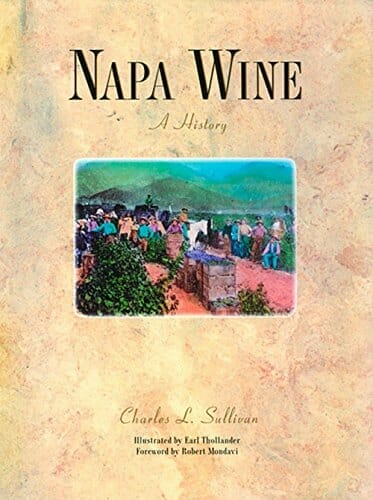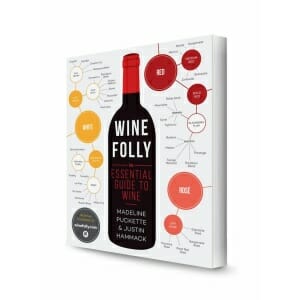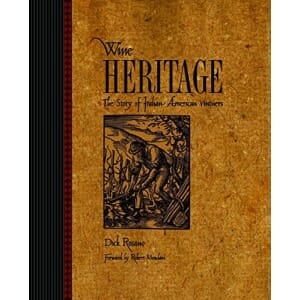Napa Wine: A History from Mission Days to Present, Second Edition
$45.00
Home Is where the wine is!
- Satisfaction Guaranteed
- No Hassle Refunds
- Secure Payments
Description
Charles Sullivan’s Napa Wine: A History, is the engaging story of the rise to prominence of what many believe to be the greatest winegrowing area in the Western hemisphere. This new edition completes that picture, bringing to light more than a decade of dramatic changes and shifted norms visited upon the valley, from pholoxera-wasted vineyards to High Court-officiated territorial battles, told in a rousing, transportive narrative. Beginning in 1817 with the movement of Spanish missions into the San Francisco Bay area, Sullivan winds his way through the great wine boom of the late 19th-century, the crippling effect of Prohibition, and Napa’s rise out of its havoc to its eventual rivaling of Bordeaux in the judgments of 1976 and 2006. Published in cooperation with the Napa Valley Wine Library, the book includes historic maps, charts of vineyard ownership, and vintages from the 1880s.
Editorial Reviews
A marvellous resource, telling the story of virtually every Napa vintage from the 1860’s to present… special emphasis is placed on the modern wine revolution and Napa’s unique contributions since the 1960’s –Robert Mondavi
Sullivan has given us, in gripping detail, a history of wine in the state. Napa Wine makes a rich and exciting contribution to our understanding of who Americans are and why. –Gerald Asher, Gourmet Magazine
First published in 1994, this Napa history has been revised and brought current through 2007. However, as is the case with any history and especially one where the target moves as rapidly as wine in Napa, it is not complete. Yet, it is as complete as can be expected and covers almost everything which one could wish to know about the history of Napa winemaking.
Sullivan begins his exploration even before there was wine in Napa with
a discussion of grape growing at California missions. From there he
introduces the reader to the Napa pioneers like Joseph Osborne at Oak
Knoll-Eschol Vineyard, Charles Krug, and George Yount. He discusses land
transactions, wine production, grape varieties etc. beginning in about
1860. After this introductory material, he covers Napa wine from land
through grape, winemaking, and sale in thirteen more chapters. He
devotes about a chapter to each decade from 1860 to 1900 plus a summary chapter. The discussions cover virtually everything the reader could want to know including evaluations of almost every vintage.
For the years from 1900-2007, the divisions are more topical, e.g.
Prohibition, with more than one-half of the book discussing the period
since the end of Prohibition. As with the earlier years, Sullivan covers
everything about the people and the wines with the exception of some
skeletons which, perhaps, are better left buried. What isn t discussed
in the text is probably found in the fourteen pages of appendices which
contain information on wineries, their owners, and their production;
vintages, planted acreage, and even the amount for which the fruit was
sold. There are also five maps showing winery locations.
If you find the text and appendices provide insufficient information,
there are extensive endnotes at the end of each chapter and a
bibliography. The book also has numerous photographs, illustrations, and tables all of which serve to provide more insight into Napa s history and people.
With such extensive coverage, it may seem untoward to quibble about the
fact that when the second edition was released references to the BATF
were not updated nor the description of Stag s Leap Winery was not corrected nor some ownership information was not changed. (Most regrettable because it may lead to confusion is the claim that Mataro is the Spanish name for Mourvèdre. (p. 137) In Spain the grape is most commonly called Monastrell with some occasional regional variations.
Mataro is now used in Australia and elsewhere and was common in France before the phylloxera epidemic decimated the vines there.) But, like much of the story of wine, it is any Napa history is a constantly moving target and will always need emendation.
For those who know only today s Napa wines, this book is a revelation. Though current production centers on Cabernet Sauvignon and Bordeaux varieties, until Prohibition the best wines were often Riesling and sauternes. Sullivan s exploration of why that was and what led to the change to the reds is something everyone interested in wine should know.
That alone would justify reading this book. But the story beyond
Cabernet s current dominance is not only worth learning but is
fascinating in itself.
Well written and highly recommended. –Harold Baer, Jr., Colorado Wine News
About the Author
Charles L. Sullivan has written more than one hundred articles for major wine and food journals and is the author of many books on the subject of wine history, including A Companion to California Wine: An Encyclopedia of Wine & Winemaking from the Mission Days to Present, Sonoma Wine & the Story of Buena Vista, and Zinfandel: A History of a Grape and its Wine. Earl Thollander is an artist and popular illustrator. He is the illustrator of Backs Roads of California. Robert Mondavi was a leading California winemaker.
Product Specifications
- Hardcover: 480 pages
- Publisher: Board and Bench Publishing; 2nd edition (July 1, 2008)
- Language: English
- ISBN-10: 1891267078
- ISBN-13: 978-1891267079
- Product Dimensions: 8.2 x 1.5 x 10.4 inches
- Shipping Weight: 3.9 pounds
Additional information
| Weight | 3.9 lbs |
|---|---|
| Dimensions | 8.5 × 1.5 × 10.5 in |




